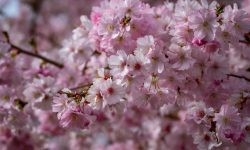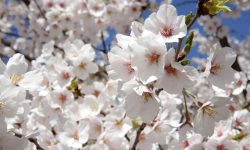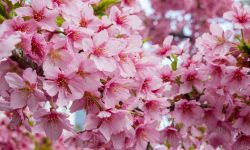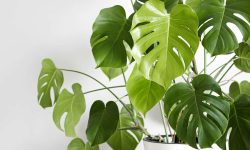Known affectionately as the “wax plant,” Hoya is a beloved houseplant for its glossy leaves, vining habit, and stunning clusters of star-shaped flowers. Whether trailing gracefully from a hanging basket or climbing a trellis on the patio, Hoyas add lush, tropical charm to any space. But while they may look exotic, Hoyas are surprisingly low-maintenance—if you understand their needs.
Caring for a Hoya plant indoors and outdoors year-round means more than just watering occasionally. These resilient vines thrive when you provide the right balance of light, moisture, temperature, and support. From selecting the best potting mix to encouraging those iconic blooms, this guide will walk you through every step to keep your Hoya happy and healthy no matter the season.
Understanding the Nature of Hoya Plants
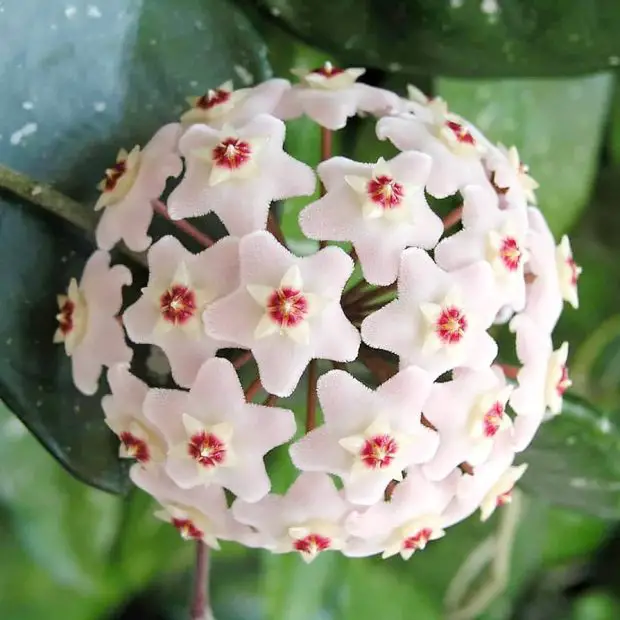
To care for a Hoya plant successfully year-round, it’s essential to understand its natural characteristics and preferences. Hoyas are tropical and subtropical epiphytes or semi-epiphytes, meaning they often grow on trees or rocks in their native environments rather than in soil. This natural growth habit explains why they prefer well-aerated growing mediums and dislike soggy roots. They absorb moisture and nutrients from rain, air, and organic debris in the wild, so replicating these conditions at home helps them thrive.
Hoyas are slow to moderate growers, and their thick, waxy leaves store water, making them drought-tolerant and low-maintenance. Some varieties trail while others climb, and many develop long tendrils before putting out new leaves or flowers. These vining behaviors make them ideal for hanging baskets, trellises, or even mounted displays. Understanding that Hoyas do things in their own time—whether it’s putting out growth or blooming—can help set realistic expectations and encourage patient, attentive care.
Choosing the Right Variety for Your Environment
Selecting the right Hoya variety is a key step to ensuring long-term success, especially when considering your local climate and indoor conditions. Some hoyas are more tolerant of cool temperatures or lower light, while others demand warmth and bright light to flourish. For instance, Hoya carnosa and Hoya pubicalyx are ideal for beginners due to their adaptability—they thrive indoors, tolerate some neglect, and can handle a wide range of humidity levels. If you’re in a more humid or tropical environment, you might consider Hoya australis or Hoya obovata, which love warm, bright conditions and can be grown outdoors most of the year in USDA zones 10 and up.
For cooler climates or homes with less natural light, Hoya curtisii or Hoya bella may be better suited, as they are more compact and do well under grow lights or near bright windows. If you’re drawn to unusual foliage, varieties like Hoya kerrii (with heart-shaped leaves) or Hoya retusa (with thin, grassy leaves) add visual interest but may be a bit fussier about their environment. Matching your Hoya to the conditions you can consistently provide—light, humidity, temperature, and space—will reduce stress for both the plant and the grower, ensuring healthier growth and better chances of blooming.
Ideal Light Conditions Throughout the Year
Hoya plants thrive in bright, indirect light, and adjusting their light exposure throughout the seasons is essential for healthy growth and flowering. Indoors, place your hoya near an east-facing or bright south-facing window, where it receives gentle morning sun and filtered light during the afternoon. This helps maintain compact growth and encourages blooming, especially for varieties like Hoya carnosa and Hoya compacta. Avoid direct, harsh afternoon sunlight, which can scorch the leaves, especially in summer. If only west-facing light is available, diffuse it with sheer curtains to protect the plant from heat stress.
During winter, natural light levels drop significantly, and your hoya may experience slowed growth. To compensate, move it closer to a window or supplement with full-spectrum grow lights for at least 10 to 12 hours a day. Consistent light exposure prevents legginess and helps maintain leaf color and form. In warmer climates where hoyas are grown outdoors, place them in a shaded patio, under a tree canopy, or where they get filtered sunlight throughout the day. Too much shade can limit growth and delay blooms, while too much sun can bleach or damage leaves. Adjust placement gradually as seasons shift to prevent light shock and ensure your hoya continues to thrive year-round.
Temperature and Humidity Requirements by Season
Hoya plants thrive in warm, humid conditions year-round. As tropical natives, they prefer consistent temperatures and steady humidity, though their needs shift slightly with the seasons.
During spring and summer, ideal temperatures range from 65°F to 85°F (18°C to 29°C), with humidity levels around 60% or higher. This supports active growth and blooming. If your environment is dry, use a humidifier or place the plant on a pebble tray with water. Mist in the morning for an added boost.
As temperatures cool in fall, keep hoyas above 55°F (13°C) and protect them from drafts. For outdoor plants, bring them inside before frost arrives. In winter, aim for indoor temperatures of 60°F to 70°F (15°C to 21°C). Avoid cold windows or heat vents, and maintain humidity to prevent leaf stress. Proper seasonal care helps your hoya stay healthy and bloom-ready year after year.
Watering Schedule and Seasonal Adjustments
Hoya plants have thick, waxy leaves and succulent-like qualities, meaning they store water and prefer to dry out slightly between waterings. However, their watering needs change throughout the year based on light, temperature, humidity, and growth stage.
Spring and Summer: Active Growth Phase
During the warmer months, your hoya will be in its active growing season. It typically needs water once the top 1–2 inches (2.5–5 cm) of soil feel dry to the touch. This may mean watering once every 5 to 7 days, depending on your environment. Be consistent, but always check the soil moisture before watering. Ensure your pot has proper drainage, as soggy soil can lead to root rot. Plants in brighter light or warmer rooms may need slightly more frequent watering.
Fall: Transition Period
As growth begins to slow, your hoya’s water needs decrease. Start spacing out your watering sessions—typically every 10 days or more, depending on indoor climate. It’s important to let the soil dry more thoroughly during this time to avoid overwatering during dormancy.
Winter: Dormancy or Slow Growth
In winter, most hoyas enter a resting phase. Watering should be minimal—about every 2 to 3 weeks or when the soil is completely dry. Cooler temperatures and shorter days reduce water uptake. Overwatering during this season is a common cause of root rot and leaf drop. If your home is heated and dry, misting or using a humidifier can help support leaf health, but avoid soaking the soil.
Additional Tips
Always water thoroughly, allowing excess water to drain out of the bottom of the pot.
Avoid letting the plant sit in a saucer of standing water.
Use room-temperature water to prevent shocking the roots.
Consider adjusting watering frequency if your hoya is mounted, grown in terracotta (which dries faster), or kept in a very humid or dry indoor environment.
Adapting your watering schedule to seasonal changes will help your hoya remain healthy, encourage blooming, and reduce the risk of root issues year-round.
Soil Mix and Potting Considerations
Hoya plants need a well-draining, airy soil mix that mimics their native epiphytic growing conditions. A compact or moisture-retentive mix can suffocate the roots and lead to rot. The ideal blend combines chunky materials like orchid bark, perlite, and coco coir or peat moss to allow both airflow and moderate moisture retention. This ensures roots stay healthy and oxygenated.
Terracotta pots are an excellent choice because they allow excess moisture to evaporate, reducing the risk of overwatering. Ensure the pot has ample drainage holes. Repot your hoya every 2 to 3 years in spring, or when it becomes rootbound, using fresh mix to refresh nutrients and encourage continued growth. Avoid oversized pots—hoyas bloom better when slightly snug in their containers.
Fertilizing for Healthy Leaves and Blooms
Hoya plants are light to moderate feeders, but regular fertilizing can significantly enhance their growth and flower production. During the active growing season—from spring through early fall—feed your hoya every 2 to 4 weeks with a balanced, water-soluble fertilizer diluted to half strength. Look for formulas with an even N-P-K ratio like 10-10-10 for general growth or a bloom-boosting type such as 5-10-5 when you want to encourage flowering.
Micronutrients like magnesium and calcium also support strong foliage and vibrant blooms. For organic alternatives, options like worm castings or seaweed extract offer gentle nourishment while enriching soil health over time.
In fall and winter, reduce or pause feeding altogether as the plant enters dormancy. Over-fertilizing during this time can stress the plant or lead to salt buildup in the soil. Always water thoroughly after fertilizing to prevent root burn and ensure nutrients are well distributed.
Pruning Techniques for Shape and Flower Production
Pruning hoya plants isn’t just about aesthetics—it plays a key role in encouraging fuller growth and more blooms. Light pruning helps shape the plant, prevents legginess, and redirects energy toward healthy stems and leaves. Use clean, sharp scissors or pruning shears to trim back overly long vines or remove weak, damaged, or tangled growth. Always cut just above a leaf node to encourage branching.
For better flower production, avoid cutting the short spurs (peduncles) where hoyas bloom. These small stubby stems may look old or dry, but they often rebloom year after year. Removing them can delay future flowering. Instead, let the plant keep these peduncles intact even after the flowers fade.
The best time to prune is in early spring before active growth resumes. However, light shaping can be done any time of year if needed. Regular but conservative pruning keeps your hoya compact, healthy, and more likely to produce abundant flowers.
Supporting Vines with Trellises and Hangers
Hoya plants are natural climbers and benefit greatly from structural support as they grow. Using trellises, hoops, or hangers not only enhances their ornamental appeal but also improves air circulation around the foliage, reducing the risk of pests and diseases. For vining varieties, a small indoor trellis or moss pole gives stems something to wrap around, encouraging vertical growth and maximizing space—especially in small rooms or apartments.
Hanging baskets are another popular choice, allowing long vines to cascade elegantly. When using hangers, rotate the plant regularly so all sides receive equal light and grow evenly. You can also train the vines to loop around a wire circle or wall-mounted hook for creative displays.
Use soft plant ties or clips to gently secure vines to supports without damaging the stems. As the plant matures, it will naturally grip and twine around its structure. Providing the right support not only makes your hoya more visually striking but also encourages healthier, more vigorous growth.
Encouraging Flowering Indoors and Outdoors
Getting a hoya to bloom can take patience, but the rewards—clusters of star-shaped, fragrant flowers—are well worth the wait. Whether grown indoors or outdoors, the key to encouraging flowering lies in meeting a few essential conditions.
Hoyas need bright, indirect light to produce blooms. Indoors, place your plant near a south- or east-facing window where it receives several hours of filtered sunlight. Outdoors, choose a spot with dappled shade or morning sun and afternoon protection. Insufficient light is one of the most common reasons hoyas fail to flower.
Mature stems are more likely to bloom, so avoid excessive pruning, especially of the short, stubby spurs (peduncles) where flowers form year after year. Never cut these off, even after the blooms fade.
A slight period of stress—such as cooler nighttime temperatures (around 60°F or 15°C) or letting the soil dry slightly more than usual—can sometimes trigger flowering. During spring and summer, feed your hoya with a balanced fertilizer or one slightly higher in phosphorus (the middle number in NPK) every 4–6 weeks to support bud development.
Lastly, be patient. Some hoyas take a few years to flower, especially from cuttings, but with consistent care and the right environment, blooms will come naturally—often more abundantly each year.
Managing Pests and Diseases Year-Round
Keeping hoyas healthy means staying vigilant against common pests and diseases throughout the year. Indoors and outdoors, watch for mealybugs, spider mites, aphids, and scale insects. These pests often hide in leaf joints or under leaves and can be managed early with insecticidal soap, neem oil, or by wiping them off with a cotton swab dipped in alcohol.
Root rot is the most common disease, typically caused by overwatering or poorly draining soil. Ensure your pot has proper drainage holes and use a chunky, airy mix to keep roots healthy. Fungal issues like leaf spot can occur in humid, stagnant conditions—good air circulation and spacing between plants help prevent this.
Regularly inspect your plant, especially during seasonal transitions when stress makes it more vulnerable. Wipe down leaves, remove debris, and quarantine new plants before introducing them to your collection to maintain a pest- and disease-free environment year-round.
Repotting and Refreshing the Soil Mix
Hoya plants don’t need frequent repotting, but over time, their roots can outgrow the pot or the soil can break down and compact, reducing aeration and drainage. Ideally, repotting should be done every 2 to 3 years in early spring when growth resumes. If you notice roots circling the pot, slow growth, or water pooling on the surface, it’s time for a refresh.
When repotting, gently remove the plant, loosen the roots, and trim away any dead or mushy ones. Choose a pot only slightly larger than the previous one to prevent overwatering issues. Always use a fresh, chunky, well-draining mix—combine orchid bark, perlite, and quality potting soil for the best results.
Refreshing the top few inches of soil annually, even without repotting, helps maintain nutrient levels and keeps the mix light and breathable. Avoid disturbing the roots too often, as hoyas prefer to be slightly root-bound, which can even encourage flowering.
Indoor Placement Tips for Health and Growth
Proper placement indoors can make the difference between a thriving hoya and one that struggles. These plants naturally grow in bright, filtered light under forest canopies, so mimicking that environment is key. Place your hoya near an east- or west-facing window where it can receive several hours of gentle, indirect sunlight each day. South-facing windows work well too, but be sure to diffuse intense midday light with sheer curtains to prevent leaf scorch.
Avoid placing hoyas in dark corners or areas with inconsistent lighting, such as hallways or shelves far from windows. If natural light is limited, especially in winter, consider using a full-spectrum grow light to maintain healthy growth and encourage flowering.
Air circulation is also important indoors. Position your plant where air flows freely but avoid placing it directly in front of heaters, air conditioners, or drafty windows, as temperature extremes and dry air can stress the plant. Rotating the pot every couple of weeks helps the plant grow evenly and prevents it from leaning toward the light.
Lastly, consider elevating trailing varieties in hanging planters or placing them on shelves to let vines cascade gracefully, which not only promotes air flow around the foliage but also adds decorative charm to your space.
Outdoor Placement and Seasonal Transitions
Moving your hoya plant outdoors during spring and summer can provide a noticeable growth boost and even promote flowering, thanks to brighter light and improved air circulation. However, it’s crucial to transition the plant gradually to avoid sun shock. Once nighttime temperatures consistently remain above 60°F (15°C), start placing your hoya in a shaded, protected area outdoors for a few hours each day. Over the course of one to two weeks, slowly increase its exposure to morning or dappled light, but always avoid intense afternoon sun, which can cause leaf burn.
Ensure the pot has excellent drainage to prevent waterlogging after rain, and protect the plant from strong winds. Outdoor conditions can also attract pests, so inspect your hoya regularly.
As fall approaches and temperatures begin to dip below 55°F (13°C), bring the plant indoors to avoid cold stress. Before the transition, rinse the foliage to remove any pests or dust, trim dead leaves, and inspect the soil for signs of rot or infestation. Once inside, place it in a bright location and maintain consistent humidity to help the plant adjust to indoor conditions. Smooth seasonal transitions like these will keep your hoya strong, adaptable, and thriving year-round.
Propagating Hoyas for More Plants
Seasonal Care Calendar for Year-Round Success
To keep your hoya thriving year-round, tailor your care routine to each season’s unique demands. Hoyas respond to seasonal changes in light, temperature, and humidity, and adjusting your care accordingly ensures optimal health and flowering.
Spring (Growth Kickoff):
This is the best time to repot, prune, and propagate. As days get longer and warmer, your hoya will enter its active growing phase. Begin feeding with a balanced liquid fertilizer every 2–4 weeks. Resume regular watering, allowing the top inch of soil to dry between waterings.
Summer (Peak Growth and Blooming):
Provide bright, indirect light and increase watering slightly as the plant uses more moisture. Maintain high humidity, especially during heat waves. Keep feeding monthly and avoid moving the plant once buds appear—hoyas dislike being disturbed during blooming.
Autumn (Transition Period):
As light levels and temperatures start to drop, gradually reduce watering and feeding. Inspect for pests that may seek shelter indoors. If moving your hoya inside, do it early in fall to help it acclimate gradually to the indoor environment.
Winter (Rest and Recovery):
Hoyas enter a semi-dormant state and grow slowly. Water sparingly, just enough to prevent shriveling, and stop fertilizing altogether. Keep the plant near a bright window, away from cold drafts and heating vents. Humidity can be maintained with a humidifier or pebble tray.
By following this seasonal rhythm, you’ll help your hoya stay strong, healthy, and ready to put on a spectacular show of blooms year after year.
Long-Term Tips for Thriving Hoya Plants
To keep Hoya plants healthy and blooming for years, consistency is key. Maintain a regular care routine with stable lighting, humidity, and temperature. Avoid overwatering, and let the soil dry out between waterings. Feed monthly during the growing season with a balanced, diluted liquid fertilizer. Prune lightly after blooming to remove dead growth and encourage branching. Refrain from moving the plant frequently, especially once buds appear. Monitor for pests regularly and repot only when rootbound. With patience and gentle care, Hoyas will reward you with lush foliage and fragrant, star-shaped blooms for decades.
FAQ About Growing and Caring for Hoya Plants
Does Hoya need direct sunlight?
No. Hoyas thrive in bright, indirect light. Direct sunlight can scorch the leaves, while too little light may cause poor growth and no blooms. Place your plant near an east- or south-facing window with sheer curtains for best results.
How often should I water my Hoya?
Watering depends on the season and growing conditions. In spring and summer, water when the top 1–2 inches of soil are dry. In fall and winter, water less frequently, allowing the soil to dry out completely between waterings. Always use pots with good drainage to prevent root rot.
Is it hard to get Hoyas to bloom, and what do they need?
Hoyas can take a few years to bloom, especially if propagated from cuttings. To encourage flowering, provide bright indirect light, stable temperatures above 60°F (15°C), high humidity, and avoid moving the plant when buds appear. Never cut off old flower spurs—Hoyas often rebloom from the same spot.
When should I repot my Hoya?
Only repot when necessary—if roots are growing out of the drainage holes or the soil has degraded. Hoyas prefer slightly root-bound conditions and usually only need repotting every 2–3 years. Choose a pot just one size larger and use a well-draining mix.
How can I propagate a Hoya plant at home?
Hoyas are easy to propagate from stem cuttings. Cut a healthy stem with 2–3 leaf nodes, dip in rooting hormone (optional), and place in moist, well-draining soil or clean water. Keep the cutting in a warm, bright spot out of direct sunlight. Roots typically develop in 3–6 weeks, and once established, the cutting can be potted up.
Conclusion
Caring for a Hoya plant is a deeply rewarding journey, blending patience with simple, thoughtful routines. With the right balance of light, water, temperature, and seasonal care, Hoyas can flourish for decades—offering glossy green leaves and starry, fragrant flowers that brighten any space. Whether you grow them indoors or outdoors, on trellises or in hanging pots, these resilient vines will thrive when treated with consistency and care. As you nurture your Hoya, it will grow not just in size, but in beauty—becoming a lasting part of your home and a source of joy for years to come.

